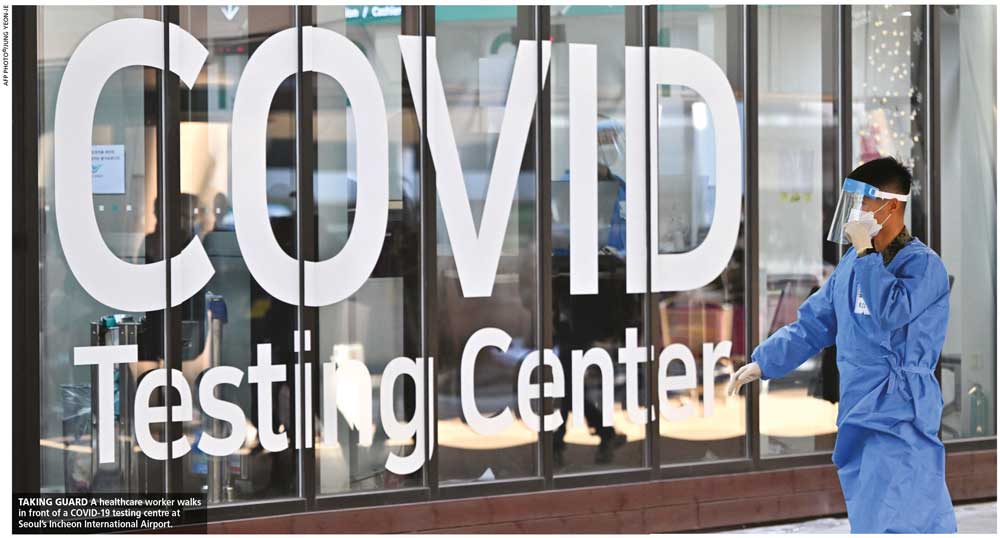PESTILENTIAL CORONAVIRUS REEMERGES
Saro Thiruppathy reports on the reemergence of the deadly COVID-19 virus and its JN.1 variant across the globe with a focus on the Asian region

When China informed the WHO on 31 December 2019 that there was a mysterious cluster of ‘pneumonia cases’ in Wuhan, little did the world realise that lives and lifestyles on the planet were going to be turned upside down.
By the time countries emerged from their self-imposed isolation, the global economy had taken a terrible tumble and the number of COVID-19 deaths in 2020/21 was estimated at over 14.9 million.
Various nations, led by the US, rapidly developed vaccines to combat the SARS-CoV-2 virus, and ‘big pharma’ was kept very busy for months on end. Governments rushed to grant emergency use authorisation for certain vaccines even though trials had been accelerated, and insufficient time allocated for data verification and so on.
Even as the dead were being counted however, scandals began rocking the post-pandemic world about the truckloads of money that had been made through the manufacture of vaccines and personal protective equipment (PPE), and the debilitating control exercised by some governments over their citizenry.
A classic example, which will go down in history, was the partying during a lockdown at No. 10 Downing Street. The then British Prime Minister Boris Johnson, under whose watch the revelry took place, eventually resigned from office while the ‘Partygate’ investigation was taking place.
COVID RESURGENCE After a brief respite of around 18 months, during which time economies scrambled to revert to any form of normalcy, COVID-19 began circulating once more among the global populace. The variant that’s currently doing the rounds in Asia is known as ‘JN.1’ is a sub-lineage of BA.2.86.
The US Centres for Disease Control and Prevention (CDC) says that the emergence of the JN.1 variant could be because it is more transmissible or better able to dodge immune systems. On 8 December however, the CDC maintained “there is no evidence that JN.1 presents an increased risk to public health relative to other currently circulating variants.”
Meanwhile, the World Health Organization considers JN.1 to be a “variant of interest.”
ASIA WATCH Many Asian governments are encouraging the use of masks once more, installing temperature scanners at airports and so on – hopefully to limit the circulation of COVID-19 and slow the spread of other respiratory pathogens.
These measures are being taken to protect the health and wellbeing of citizens, and prevent national healthcare systems from buckling under the pressure of another pandemic-like situation.
Towards the end of last year, China, India, Singapore, Indonesia, the Philippines and Malaysia witnessed an increase in COVID cases.
At the end of December, Singapore began seeing more patients seeking treatment at clinics and online, and reported cases increased to 32,000 by 2 December – up from 22,000 a week before.
On 22 December however, Minister of Health Ong Ye Kung noted that the estimated seven-day moving average of infections stood at 3,650 on 19 December, which was less than half of what was seen a week before.
Indonesia reinstalled thermal scanners at its main international airport in Jakarta and border checkpoints. And by the end of December, the number of hospitalisations for COVID-19 had risen by 255 percent.
The Ministry of Health also advised Indonesians to postpone any travel plans to areas that have reported a spike in COVID-19 cases, complete their vaccination dosage, wear masks in public, wash their hands and stay at home if they’re ill.
Malaysia saw a quick rise to nearly 6,800 cases on 2 December from 3,626 in the week prior. The government was more upbeat however; it said the situation was under control and not a burden on healthcare facilities in the country. Rates of hospitalisation and death were low at the end of December.
In mid-December, Chinese authorities claimed that the prevalence of JN.1 was low. Nevertheless, the authorities anticipated an increase in cases due to mass travel during the Lunar New Year holidays in February.
On 31 December, India reported its highest number of new cases (841) in a day and the count of active patients stood at over 4,300. The increase of JN.1 cases put the government on alert ahead of New Year celebrations.
Sri Lanka’s Ministry of Health announced on 25 December that its data indicates a minimal spread of JN.1 in the island. However, Sri Lankans have been strongly advised to follow the mask and handwashing protocols that were in place during the pandemic.
MUTED RESPONSE Statistics relating to COVID-19 are extremely dynamic and can change in a trice. But the fearmongering and control exercised by many governments during the pandemic weren’t evident last year since the global populace is now more informed about what really happened during that extremely bleak period in recent history.
Most leaders appeared to be proceeding cautiously with their prevention and control procedures, rather than enforcing draconian isolation measures through lockdowns.





